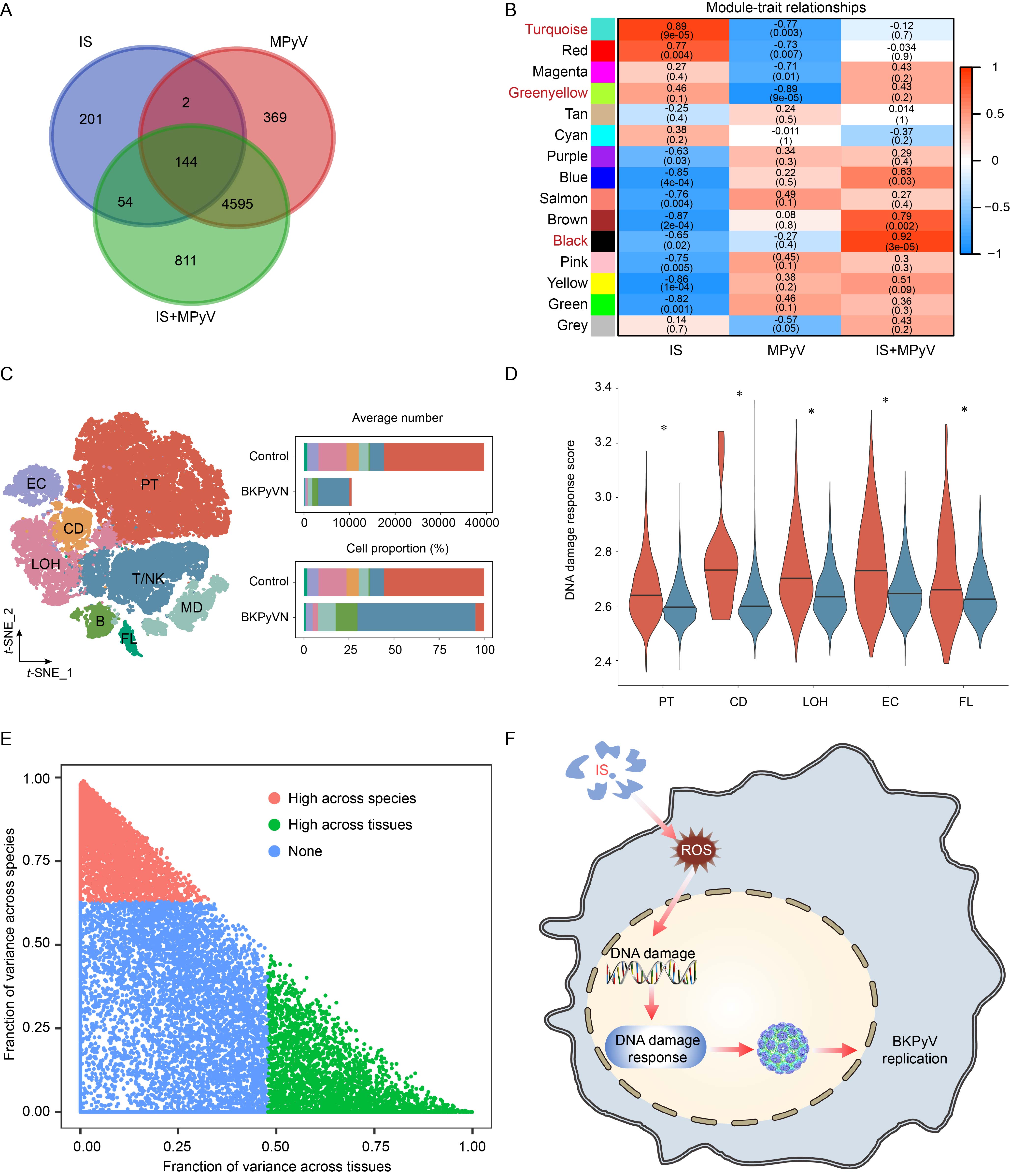Integrating single-cell RNA-seq and bulk RNA-seq reveals ischemic injury Promoting polyomavirus replication by DNA damage response
Gang Huang1, Qian Li1, Hui Zhang1, Xutao Chen1, Guodong Zhao1, Siyan Meng1, Shengxian Xu1, Yuxia Lin1, Feng Yang1.
1Organ Transplant Center, The First Affiliated Hospital of Sun Yat-Sen University, Guangzhou, People's Republic of China
Introduction: BK polyomavirus (BKPyV) can establish persistent infections in 90% of the healthy adult population, and its reactivation is associated with graft failure in kidney transplant patients. Ischemic injury (IS) increases the risk of viral reactivation, making BKPyV a primary cause of allograft failure. However, the detailed molecular mechanisms of IS that promote BKPyV replication are not well characterized. The aim of the study was to identify the critical pathways and hub genes involved in IS’s promotion of polyomavirus replication based on single-cell RNA-seq and bulk RNA-seq data.
Methods: We performed bulk RNA-seq on the control group, IS alone group, MPyV alone group, and IS+MPyV group to evaluate the detailed molecular mechanisms of IS involved in polyomavirus replication in mice. Subsequently, we employed single RNA-seq to identify the key pathways in BKPyV-associated nephropathy (BKPyVAN) at a single-cell resolution. Finally, we identified CDK1 as the core gene according to the conservation of gene expression and the critical pathway across mice and humans. Additionally, we screened the potential drug repurposing targeted CDK1 by docking-based virtual screening.
Results: We found that IS could induce reactive oxygen species (ROS) generation and then activate the DNA damage response pathway, which could promote polyomavirus replication. Additionally, we identified CDK1 as a hub gene according to the conservation of gene expression pattern and key pathways in mice and humans. Moreover, we evaluated the role of CDK1 in BKPyV replication via multi-omics data. Subsequently, we screened the potential drug repurposing targeted CDK1 by docking-based virtual screening to help improve the outcome of BKPyVAN.
Conclusions: The present study found that IS could induce ROS to regulate the expression of CDK1 via the ‘DNA damage response’ pathway to promote polyomavirus replication.

[1] BKPyV
[2] ischemic injury
[3] transcriptome
[4] single-cell sequencing
[5] pathway enrichment
